
Do you have pregnant sheep, goats or cows that fall sick before or after delivery? Saliva drips out of their mouth, they stop defecating or urinating, they find it difficult to stand or walk. The cause might be milk fever. Read to find out more.
Milk fever or hypocalcemia arises when animals are unable to mobilise sufficient calcium from the bones or diet when there is high demand for calcium, leading to low blood calcium level. Calcium is in high demand during late pregnancy and some days after birthing. For cows, milk fever mainly occur after birth but for goats and sheep it mainly occur before birth, during late pregnancy period (i.e. 6 weeks before birthing). Occurrence after birth isn’t common in sheep and goats.
Generally, milk fever can occur at any time from 6 weeks before to 10 weeks after birthing. Milk fever can also occur when certain compounds
>>>>>> [Read more…] <<<<<<
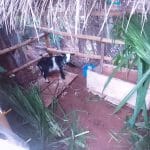
Urea molasses mineral block is a cheap supplemental block that is used to increase the nutritional qualities of low-quality feeds for ruminants (goats, sheep and cattle). It is a good source of protein, energy and minerals. Low quality feeds are cheap and abundant. Few examples include crop residues like wheat and rice straw, maize and sorghum stovers, beans plant and dry grasses. They are low in protein, vitamins, minerals and are hard to digest. Feeding these to ruminants result in sluggish growth, delayed maturation, longer pregnancy interval, poor milk yield etc.
But when you combine low quality feeds and UMMB, there will be increase in feed digestibility by up to 20 percent, increase in growth rate and increased feed intake by 25 to 30 percent. With UMMB, poor farmers don’t have to spend money on costly feeds like maize, soybeans meal, groundnut cake etc.
How to Make Urea Molasses Mineral
>>>>>> [Read more…] <<<<<<

If you are not careful, you will loose many newborn piglets before they are separated from their mother at 4 to 6 weeks of age. The guide below will help prevent or minimize pre-weaning death.
Piglets soundly asleep
During Birth: Baby pigs can be born dead. This may be due to diseases or lack of oxygen when the birth period is long. Long birth period can be caused by large number of piglets or high birth weight. Large number of piglets can also increase the number of piglets born weak. These weak piglets may then be more likely to starve, become crushed by their mother, or diseased.
If you want to reduce pre weaning mortality, you have to observe them as often as possible. Look out for the weak ones and help them to drink their mother’s milk.
Thermal Stress: Unlike many other animals, baby pigs don’t possess mechanisms
>>>>>> [Read more…] <<<<<<

Vaccines help to prevent or minimize the impact of viral diseases. They are important because viral diseases cannot be treated with drugs. They can only be prevented with vaccines. If a poultry farmer is not careful to follow certain rules, the vaccine he administer will fail to protect his birds from viral diseases. And when this happens, many farmers end up blaming the vaccine manufacturers.
Vaccines can be given to birds through drinking water, by injection, eye drop, spray etc. The most common route for broiler is via drinking water and wing web puncture (for fowlpox vaccine). For egg layers it is via drinking water, wing web puncture (for fowlpox vaccine) and injections. You can get sample vaccination/medication plans for layers and broiler below:
Vaccination/Medication Plan for Layers Vaccination/Medication Plan for Broilers
Below are rules that will help you prevent vaccine failure:
1. Vaccinate healthy birds
>>>>>> [Read more…] <<<<<<
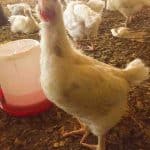
Below is broiler medication and vaccination chart you can follow. Vaccinating your birds against viral diseases is very important because viral diseases are incurable. Vaccination will help to prevent or reduce the severity of viral diseases.
Medication on the other hand, is used to treat or prevent diseases caused by bacteria, fungi or protozoa. But if you follow good biosecurity measures, you can reduce the amount of medication you give.
Here goes the chart:
Day 1: Marek vaccine: This is usually given to the chicks at the hatchery.
On getting to your brooding pen, give them multivitamins and minerals in water. Provide broiler starter feed in enough feeder such that all of them can feed at the same time without struggle.
Day 2-4: Multivitamins and antibiotics. Recommended antibiotics include …..
Day 5: Gumboro vaccine via drinking water.
Day 7: Lasota for Newcastle disease
Day 10-12: Anti-coccidiosis drugs and
>>>>>> [Read more…] <<<<<<
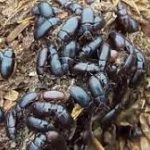
Litter beetles are those dark beetles you find in poultry houses, most especially in deep litter houses. They normally hide under everything – drinkers, feeders, stones, laying boxes that are on the floor, along the walls etc. In my early days of raising chickens, I totally ignore these beetles because I thought they were harmless. But are they harmless? They are VERY harmful!
Litter beetles
Litter beetles eat chicken feed, their larvae bore into insulations, woods etc, they climb into poultry feathers and bite them, sometimes killing weakened chickens and worst of all, they can carry a lot of poultry diseases!
The scientific name for these little destroyers is Alphitobius diaperinus. Locally, they can also be called darkling beetles, lesser mealworm, black beetles etc. They cause more problems in houses where the litter is allowed to build up without any effective control program in place.
>>>>>> [Read more…] <<<<<<
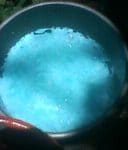
Burgundy mixture is a simple diy copper fungicide that is effective against many fungi diseases in crops. It is a mixture of copper sulfate (CuSO4) and sodium carbonate (sodium bicarbonate, Na2CO3). It is also known as “sal soda Bordeaux”, not to be confused with Bordeaux mixture, which is a mixture of copper sulphate and hydrated lime (Ca(OH)2).
The chemicals listed here can be bought in places where Industrial or Chemistry lab chemicals are sold. But it is cheaper to buy from Industrial chemical sellers. In Anambra State, Nigeria, you can get them from Uga market, close to River Niger Bridge Head.
How to Make Burgundy Mixture
The amount of ingredients to use depends on the percentage of copper sulphate in the mixture. A 1% Burgundy mixture will contain 1% copper sulphate (that is, 1kg copper sulphate in 100 liters of water). Sodium bicarbonate is usually added at a higher
>>>>>> [Read more…] <<<<<<
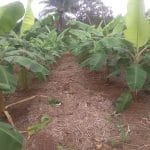
This is part 3. If you haven’t read part 1 and 2, read them here: Part 1 and part 2.
Fertilizer and Manure Application:
After planting the suckers, I applied 20:10:10 fertilizer 1 month after planting. Dosage is 30ml per plant. By this time, new, white roots have started growing. I buried the fertilizer in a shallow hole 10-20cm away from the plants, making sure I don’t damage too much roots. Note: I applied Carbofuran (for nematode control) into the same hole with the NPK. More on Carbofuran later under “pesticide application” below.
Second NPK application can be made 2 months after planting, 50cm away from the plant. I used 30ml 20:10:10 per plant but those that were growing fast got 60ml.
About 1 month or so after the second NPK application, I planned applying organic manure at 11L pig manure per plant but I couldn’t get
>>>>>> [Read more…] <<<<<<

Readers note: This is a continuation of the part 1 series. It is important that you read part 1 before this. Thanks.
Peeled, chemically treated plantain corm. You can see the tunnel I made to reach the weevil inside.
Transporting Suckers:
Suckers are very bulky and transporting them over long distances can be a nightmare. You can reduce transportation cost by cutting the pseudostems in half. The larger the corm sizes, the greater the survival rate. Even if the pseudostem eventually dies, new suckers will emerge from the corm if you leave it for some weeks. Suckers with large corms can be cut off a few centimeters above the corm.
Chemical Treatment of Suckers: After peeling the corms, I wash them and using a knapsack sprayer, I spray a mixture of insecticides, fungicides and foliar fertilizer on the corm. But note, peel the corms outside your
>>>>>> [Read more…] <<<<<<

I have grown crops like cucumber, pepper and okra and I know how much pesticides they can consume. Growing them large scale can be very expensive. While thinking of a low cost alternative, plantains or banana comes to mind (cassava and cocoyam are also cheaper to grow). I have 10 plots of land (rented) but since the past 3 years, half of it remained empty because I could not afford using it for expensive crops. So I decided to fill the empty plots with plantain and pawpaw. I will be writing about the pawpaw farm in another post.
Spray tube irrigation in my plantain farm Soil Requirements:
Plantain require a deep, well-drained soils that are rich in organic matter. The plants will grow optimally in soil with a pH between 5.5 and 7.0. They need water to yield well. So plant them during the rainy season. If rainy
>>>>>> [Read more…] <<<<<<
|
Join the Forum Do you want to discover more great info like these?
Register for free and ask your question in our farming forum! Our knowledgeable members will have your questions answered.
FarmersJoint.com strives to maintain accurate and up-to-date information; however, mistakes do happen and we won't be held accountable for anything that result from the use of information provided in this site. If you would like to correct or update any of the information, please send us an e-mail. THANK YOU!
|









